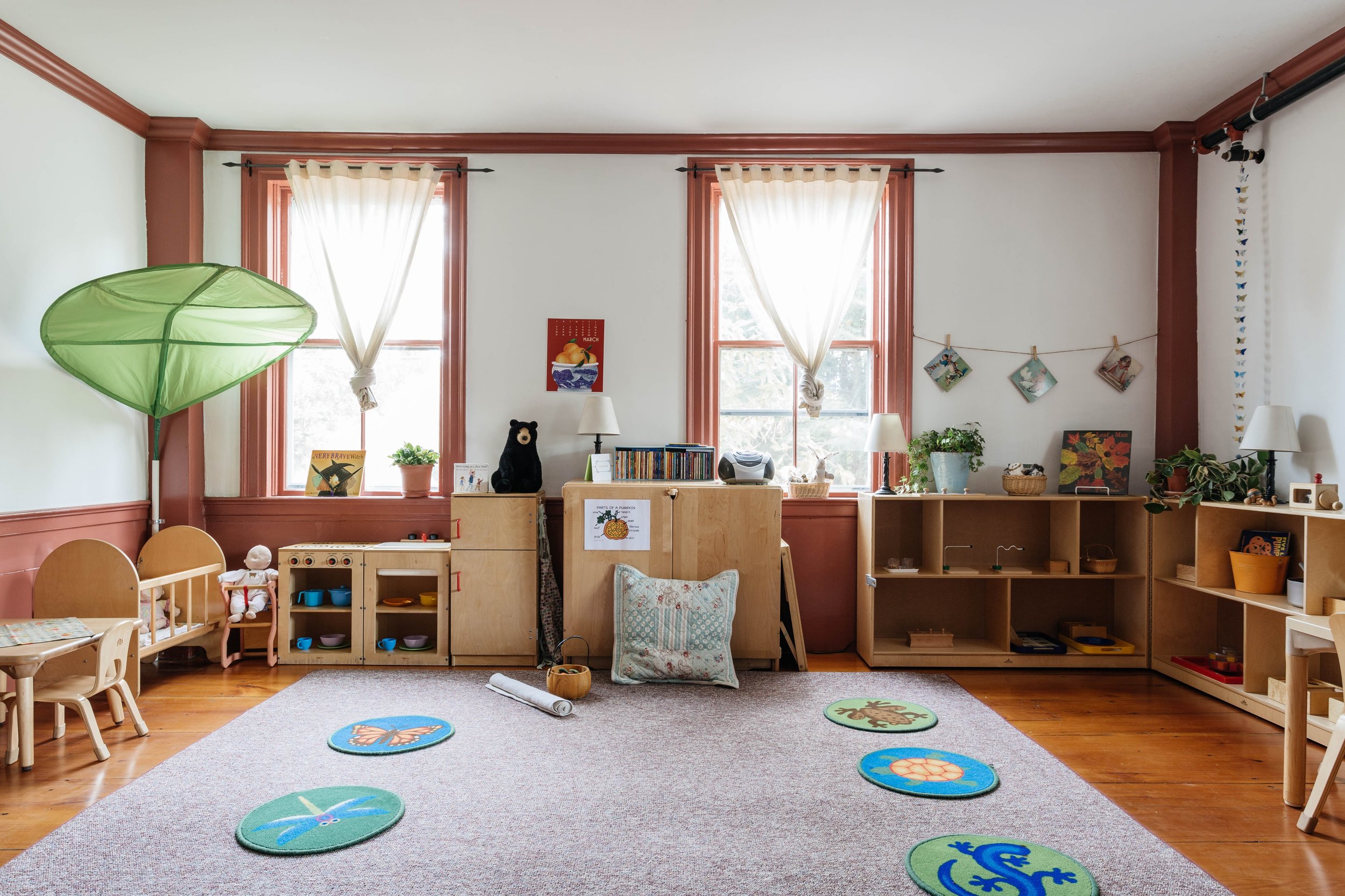The Method
So what did Dr. Montessori observe? Many of Dr. Montessori’s own ideas that were revolutionary in their time are now taken for granted. If you walk into an early childhood classroom today, you will likely notice child-size furniture. The idea of preparing an appropriate environment that would fit the child was novel at the time. Montessori schools were called “Casa dei Bambini,” which means “Children’s Houses.” Children’s Houses are spaces where children can thrive and develop at their own pace in order to reach their full potential.
Dr. Montessori observed that movement and learning are intertwined. Children in Montessori classrooms have the freedom to move about the classroom. There is no assigned seating. They may choose to work at a table or a rug on the floor. She also saw that children learn better when they have autonomy. Children in a Montessori classroom get to choose the work they would like to do. They find work that corresponds to an internal need and can stay with a piece of work until that need is met, not following an arbitrary time table.
Sustained periods of concentration can be observed in a Montessori classroom. When a child finds joy in the work, they are naturally engaged. The materials must correspond to the child’s inner need. They must be beautiful and free of distractions.
An important component of the Montessori classroom is the development of community. This is a natural occurrence in an environment where there is a sense of ownership. The classroom is designed for children, not adults; the children are responsible for it. They set the tables for lunch, sweep the floor, and take care of the plants.



